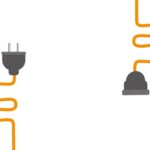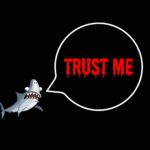The business lessons of the pandemic

Picture yourself driving on a fog-filled road you don’t know too well. You suddenly realise you’re approaching a curve—and it’s rather a sharp one.
Seasoned drivers will not slam on the brakes suddenly—that might have unpredictable consequences. Rather, they will start slowing down before they get to the sharp part of the curve. Then, when still in the bend, they will hit the gas pedal again and accelerate out of the curve, once the path ahead is clearer.
That wasn’t just a driving tip—it’s a metaphor for the unexpected detours that organizations face, like the COVID-19 pandemic. I came across it at the beginning of a recent HBR podcast hosted by Curt Nickisch. He was discussing “radical adaptability” with his guest, Keith Ferrazzi.
It’s an excellent metaphor. Most organizations drove blind, at high speed, into the beginning of global lockdowns in 2020. They then slammed on the brakes, careening and bringing themselves to a dangerous halt. Now, as health restrictions lift and the path ahead clears, they want to return to the old way of doing things—as though two years of learning never happened.
That’s not how agile organizations operate. They learn from every experience, and change and raise their game accordingly. They invest and adapt even when in a period of recession—they do not wait for the mist to lift completely before regaining their confidence.
The worst thing you could do is to treat the past two years as an aberration, a one-off, a short phase that has now ended. If you do that, you keep hurtling recklessly into the future. We all need to change our driving style, for we live in a time of continuous volatility. The Ukraine invasion is just the latest in a long line of disruptions. We have to expect many more curves in the road, and we have to navigate them smoothly.
This will take both caution and audacity.
Let’s address caution first. What did organizations learn most emphatically from the pandemic? The need for resilience. We must expect trouble, and prepare for it. That means building some safety mechanisms into our vehicle: improved visibility, better brakes, stronger bumpers, more robust frames. For a business, that translates into things like workforce flexibility, more localised supply chains, better inventory management—and the all-important cash reserves.
That way, when the next sharp bend arrives, we will be able to slow down and ride it out without panicking.
Now onto audacity. Can that work side-by-side with resilience? It can, and must. We have learned many new things through the forced experiment that the coronavirus wrought. In 2022, we know many things that we did not in 2019. We know that many types of work can be done from anywhere. We know that many types of commerce can be transacted very conveniently online. We know that most customers are very happy to complete even major payments by tapping them out on a phone. Two years of doing something new is enough to turn it into a permanent habit.
Why would we lose that knowledge, as though we are waking up from a bad dream? Many of the best inventions and the most far-reaching business breakthroughs are born during or immediately after a time of recession and slowdown. Necessity mothers invention; adversity fathers change. Look up, and look ahead: audacious companies are already zooming into a new era, one that makes digital accelerations, rethinks cultural norms, and reinvents business models.
Those who learned nothing will be the ones who go back to 2019 for their business imperatives. They will return to the office in their multitudes; they will resume the same old ways of working and producing and selling; and they will soon look like sleepwalkers from the past. All our industries have changed; all need a reset. You don’t need to dust off your old business strategy; you need to rethink it.
Finally: underlying resilience and audacity is something even more important—relationships. What made some organizations survive and thrive through the pandemic? The strength of their relationships, with their staff, their customers, their suppliers, their shareholders. Where those relationships were strong and mutually beneficial, pivots were performed. Where they were weak, things unravelled quickly.
In the business landscape of today, none of us are strong enough to make it alone. We all rely on linkages and connections, in an ecosystem of shared value. If we are narrow-minded and insular, we crack quickly. Where lots of people have our backs—because we matter to them—we can get through trouble together, and are able to explore fresh new collaborations.
That’s the single biggest lesson of the pandemic. What did you learn about relationships?
(Sunday Nation, 27 March 2022)

Buy Sunny Bindra's new book
The X in CX
here »
Popular Posts
- The pause that saves usJune 8, 2025
- Where are you rushing to—your funeral?June 29, 2025
- How to spot a real thinkerJune 15, 2025
- Built the app, forgot the flowJune 22, 2025
- The first push is the hardestJune 1, 2025















